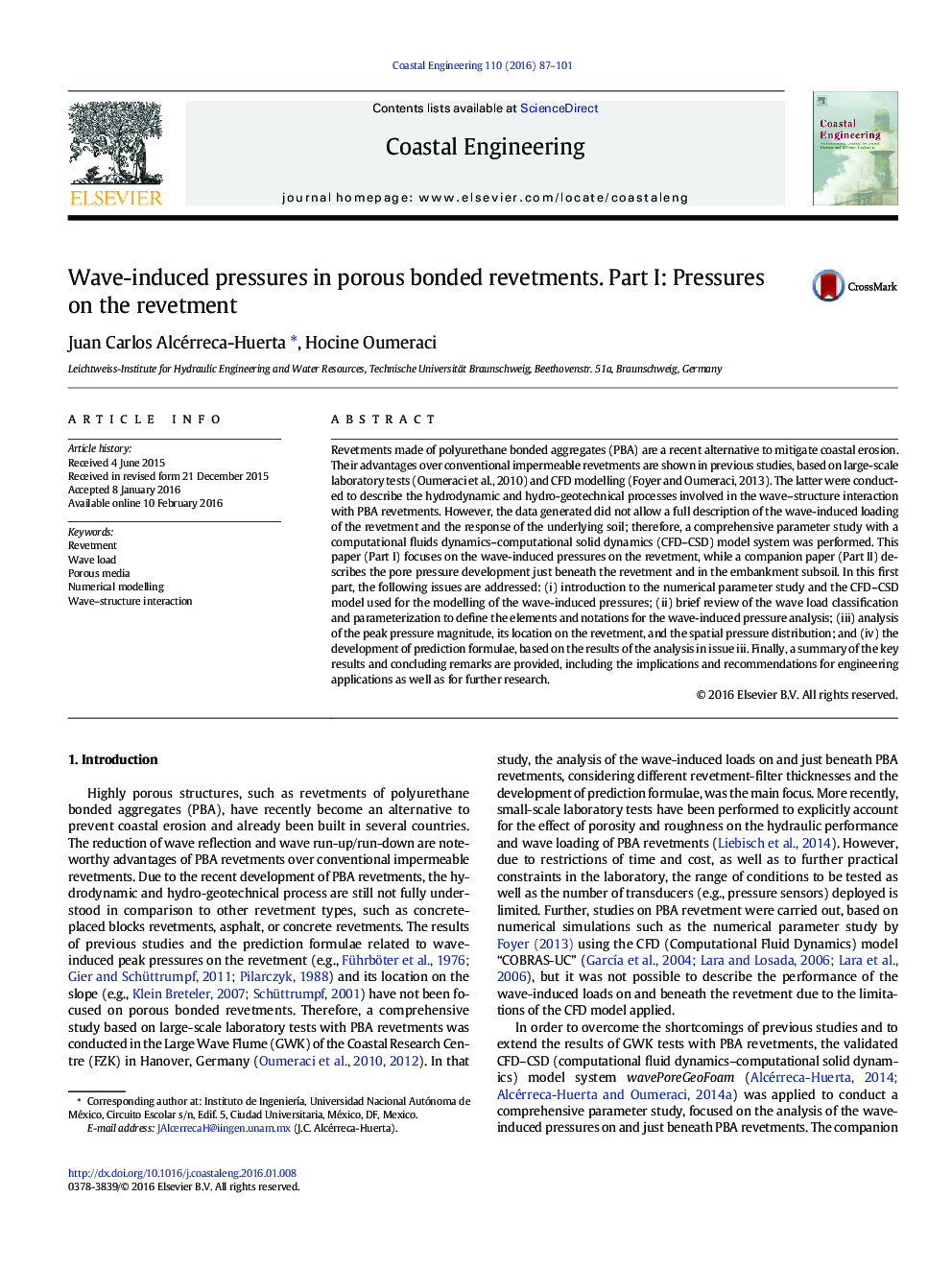| Article ID | Journal | Published Year | Pages | File Type |
|---|---|---|---|---|
| 1720531 | Coastal Engineering | 2016 | 15 Pages |
•Focus on the response of porous bonded revetments against wave loads on porous bonded revetments.•Analysis based on a comprehensive CFD–CSD parameter study, with comparison to large- and small-scale laboratory tests.•Development of prediction formulae to assess maximum wave-induced pressures, its location, and spatial distribution on porous bonded revetments.
Revetments made of polyurethane bonded aggregates (PBA) are a recent alternative to mitigate coastal erosion. Their advantages over conventional impermeable revetments are shown in previous studies, based on large-scale laboratory tests (Oumeraci et al., 2010) and CFD modelling (Foyer and Oumeraci, 2013). The latter were conducted to describe the hydrodynamic and hydro-geotechnical processes involved in the wave–structure interaction with PBA revetments. However, the data generated did not allow a full description of the wave-induced loading of the revetment and the response of the underlying soil; therefore, a comprehensive parameter study with a computational fluids dynamics–computational solid dynamics (CFD–CSD) model system was performed. This paper (Part I) focuses on the wave-induced pressures on the revetment, while a companion paper (Part II) describes the pore pressure development just beneath the revetment and in the embankment subsoil. In this first part, the following issues are addressed: (i) introduction to the numerical parameter study and the CFD–CSD model used for the modelling of the wave-induced pressures; (ii) brief review of the wave load classification and parameterization to define the elements and notations for the wave-induced pressure analysis; (iii) analysis of the peak pressure magnitude, its location on the revetment, and the spatial pressure distribution; and (iv) the development of prediction formulae, based on the results of the analysis in issue iii. Finally, a summary of the key results and concluding remarks are provided, including the implications and recommendations for engineering applications as well as for further research.
